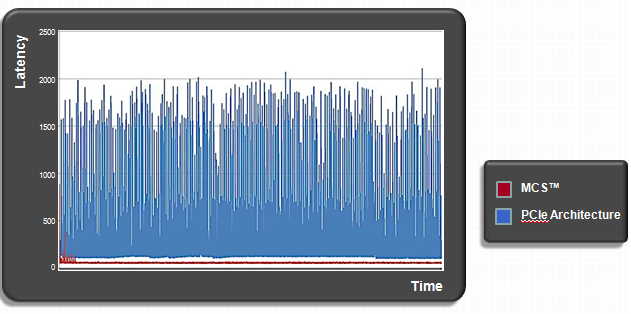Up your memory game to 1TB
While faster processing is always a moving goal, it appears that Diablo Technologies has found one easily implemented way to do just that. They call it TeraDIMM and it can up your memory game to 1TB or more. The Memory Channel Storage (MSS) allows NAND storage to be used in typical DIMM sockets.
Typical DIMMs require slots, space, cooling and power, not all of which are cheap or easy to come by for designers. While an expanded memory bus is often the only solution when low latency and high bandwidth are required, it comes with a penalty. Diablo Technologies has found a way to use flash NAND technology instead of DRAM. Even with some drawbacks, NAND is less expensive, denser and requires less power. The MSC technology permits up to 1TB of flash memory on a standard DIMM.
Inside the chip
To the CPU, a TeraDIMM operates just like a regular DIMM with identical form factor and power requirements. You can plug in a TeraDIMM into any DIMM slot without other system changes. Then, load a provided driver — available for Windows, Linux, and VMware — and the device can be configured to work as either storage or system memory.
Inside the TeraDIMM is a specialized translation ASIC (codenamed Rush). It’s implemented via a standard DIMM. The TeraDIMM can be configured in either of two ways; standard storage, ie operate just like a hard drive or as RAM.
The on-board ASCI translates the memory controller’s commands to drive the chip. The system’s components see nothing different, just an increased amount of the equivalent of hard drive or RAM space. Using 19nm flash technology, Diablo Technologies had created an easily implemented way to boost system performance.
There are limitations
The professional video industry's #1 source for news, trends and product and tech information. Sign up below.
Of course, with it being NAND based, the system cannot be as fast as DRAM. But that’s only one way to view the technology. According to Diablo Technologies, the real benefit comes from the reduction in access time to data stored on SSDs or PCI-Express devices.
The figure below compares claimed TeraDIMM latency with typical PCIe Architecture. The TeraDIMM’s latency is the red line at the lower part of the figure (Courtesy Extremetech.com).

The company claims that by configuring the device as block storage, latencies are reduced by 85 percent when compared to PCIe SSDs and reduced by 96 percent compared to SATA and SAS SSDs. This would allow VR and cloud applications to operate with DRAM-like speeds.
Kevin Wagner, VP for Diablo marketing said that “…the best PCIe SSDs have latencies 25 to 28 microsecond range. MCS, in contrast, shrinks the gap to 3 to 5 microseconds.” The company said, “MSC can be configured to expand system memory from gigabytes to terabytes, dramatically improving the performance of large in-memory applications”.
Servers can see a 100X increase in accessible system memory, allowing entire application data sets to reside in CPU memory. MSC scales up to 12.8TB per system.
